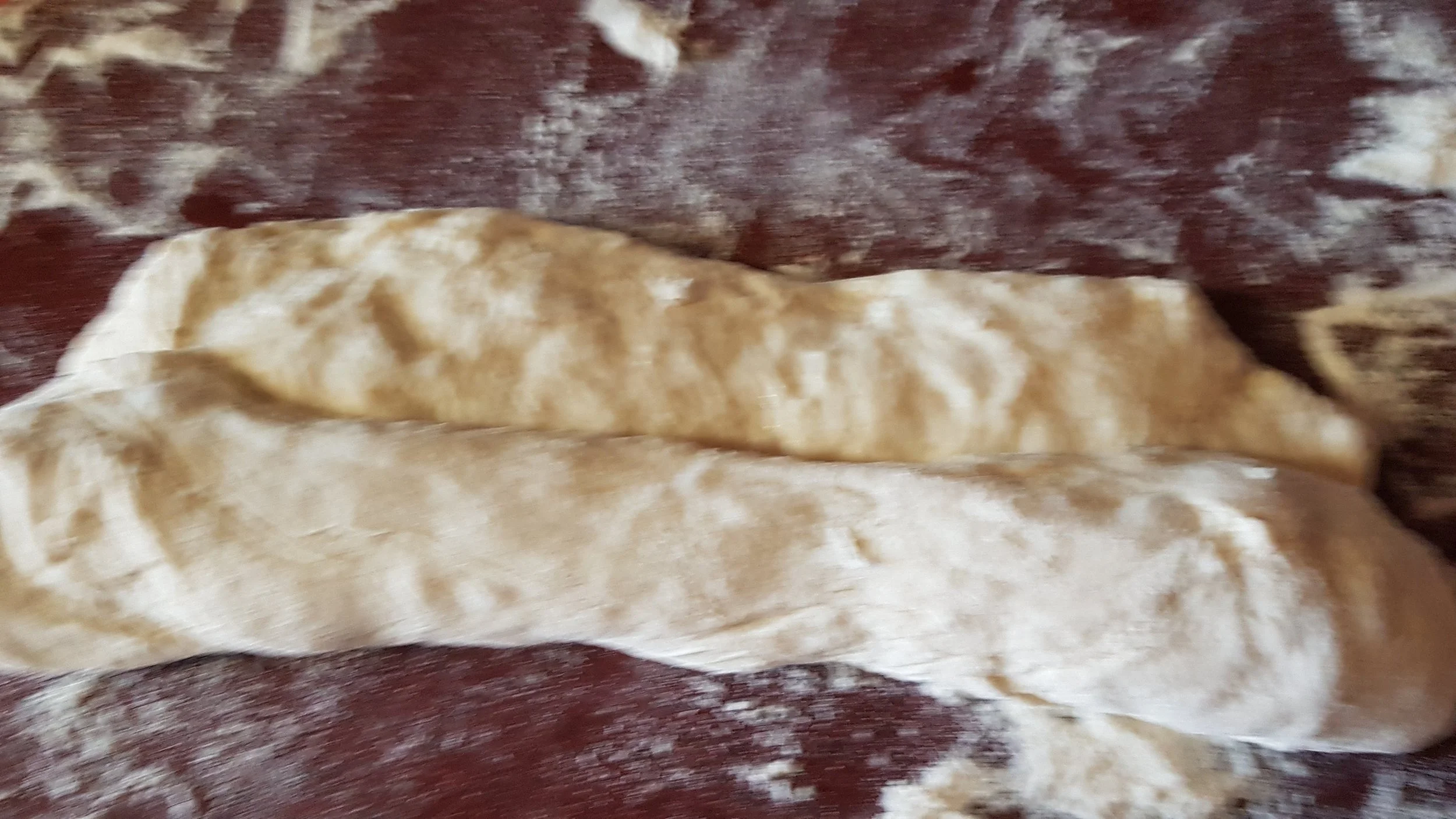Baguettes with a Poolish Ferment
France: Known for its culinary heritage, there is no other country in the world that has a simple bread symbolize its entire nation quite like the baguette. It made its debut over a century ago in 1920 in the bustling city of Paris. The name "baguette" itself translates to “wand” or “baton” in French. According to French law, a baguette can only be made with flour, salt, water, and yeast. In present-day France, boasting more than 35,000 bakeries, a staggering 12 million baguettes are sold daily across the country.
The renowned “poolish ferment” breadmaking method has its origins dating back to the 1840s in Poland, invented by a nobleman named Baron Zang. Interestingly, the term "poolish" derives from the word “polish” in old English. This method gained further recognition when Viennese bakers introduced it to Austria and eventually to France, where it catalyzed the production of Vienna bread and other high-end bakery goods in Paris using the Poolish technique. For those who are not fortunate enough to live in the heart of France, this recipe aims to guide you in creating your own flavorful baguette. Enjoy the process and the delightful results! Immerse yourself in the art of breadmaking—it's a journey worth savoring.
Baguettes with a Poolish Ferment
By Zosia Culinary Adventures | Date: May 04, 2024
Preparation Time: Poolish ferment at least the night before plus 2.5 hours on the baking day
Bake Time: 15 minutes
Yield:12 large baguettes
Equipment: baking trays or 1 large and 2 small pizza stones (my choice) and water spray bottle
Ingredients:
700g poolish ferment as per my Poolish recipe
1300 g Bread flour
700g spring water
10g fresh yeasts
30g sea salt
fine semolina for dusting the peels
Instructions:
Preheat oven to 250 °C OR 400 °F and preheat both pizza stones on both shelves of the oven.
Line 2 baking trays with linen towels.
In the large bowl mix flour and water with a danish whisk.
Cover the dough with a linen towel and let it rest for 30 minutes. This is called an autolyse method which allows the gluten/gliadin to relax and easily reform itself into the long protein chains which are the superstructure of the finished loaf.
Add the poolish ferment and mix well with a danish whisk.
Utilize the scraper as a valuable tool to assist you in carefully transferring the dough onto a clean, un-floured work surface.
Start by working the dough for 10-15 minutes with your hands to develop its structure. Then, incorporate salt into the mix and continue kneading until the dough reaches a smooth and elastic consistency, ensuring an even distribution of flavors throughout.
Lightly flour the work surface and form the dough into a ball.
Place the dough back into the bowl, ensuring it is well-covered, and allow it to rest for a recommended duration of 90 minutes to facilitate the proofing process. This step is crucial in order to achieve the desired texture and flavor.
Lightly flour the work surface and turn out the dough. Cut the dough into 12 pieces of 225g .
Cover the cut pieces with linen cloth and let them rest for 15 minutes.
Lightly flour your work surface, take each piece of baguette and flatten the piece with your finger tips.
Fold one side into the middle and press down firmly; and fold the other side again into the middles and press down firmly. It is all about getting some good strength into the baguette’s spine.
Finally fold the dough in half lengthways towards you form a long log shape.
Turn the baguette over so the seam is underneath, then roll the top very lightly to make a nice looking log.
Make a pleat in the cloth as you delicately lay each baguette down on the tray, ensuring they are not in contact with one another. Once positioned, cover the trays with a soft tea towel or a clean baking cloth, allowing the baguettes to rise undisturbed for approximately 60 minutes or until they have nearly doubled in size.
Sprinkle semolina on to the peels and place 2 baguettes on each peel with seam-side down. Slash the top of each baguettes with a sharp knife or razer.
To prepare the baguettes for baking, make sure to open the oven while taking care to cover the glass door with a thick towel to prevent it from cracking due to the sudden temperature change. Mist the inside of the oven thoroughly using a spray water bottle before placing two baguettes on each baking stone swiftly. Once the baguettes are in place, close the oven door promptly to trap the steam inside. Allow the baguettes to bake for 10-15 minutes or until they achieve a delicious golden brown color.
Cool baguettes on a wire rack.















